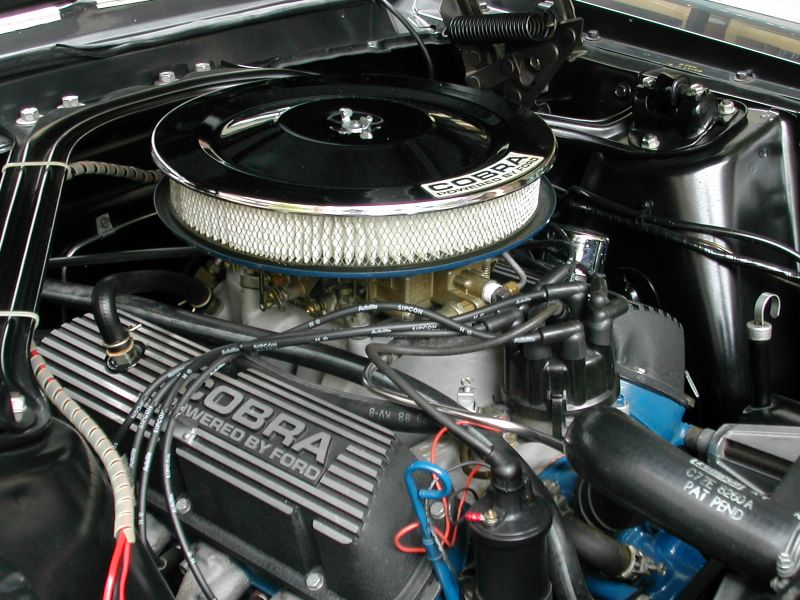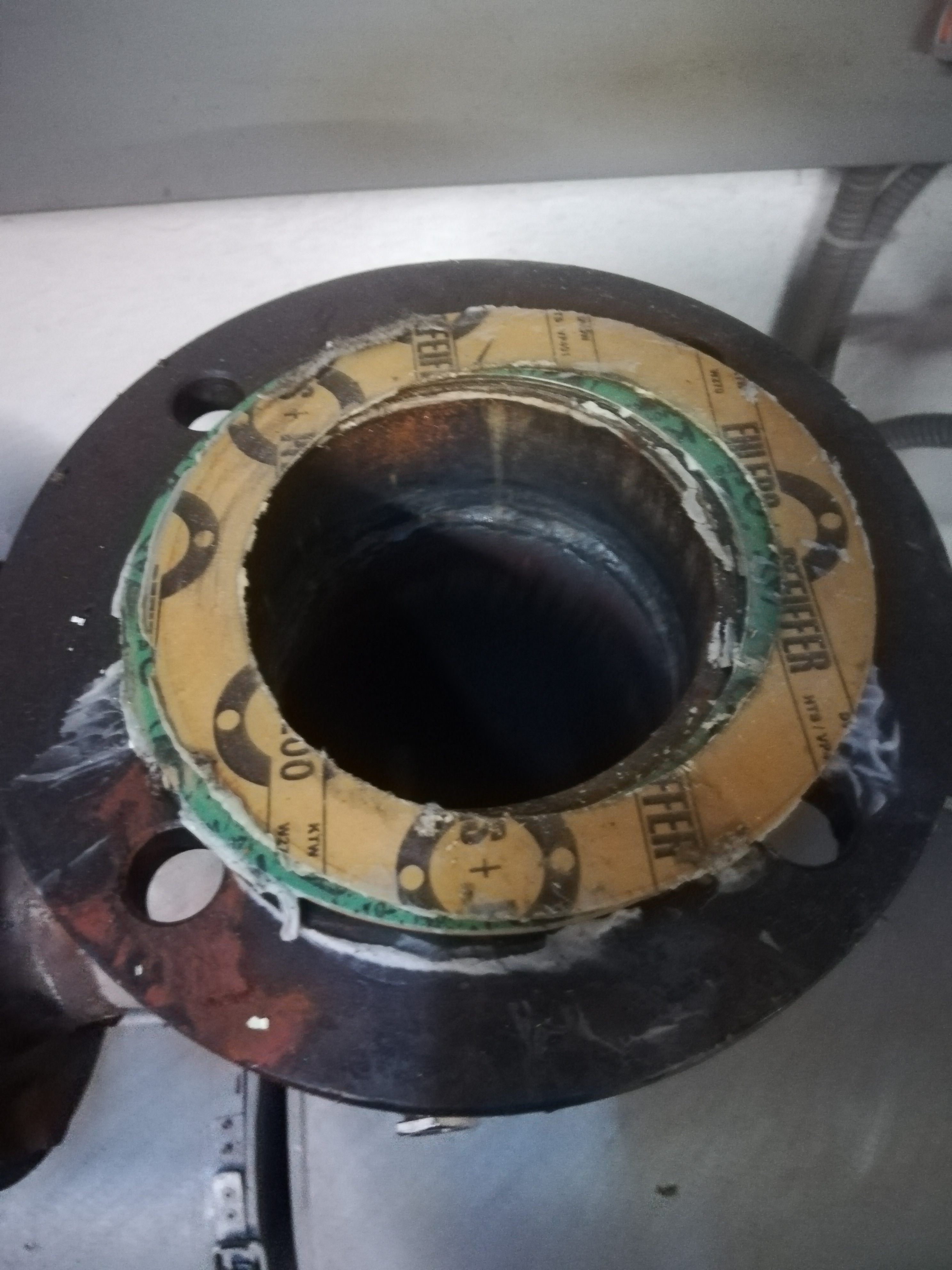|
Rocker Cover
A rocker cover, (UK), or valve cover (elsewhere) is a cover that encloses the rocker arm in an internal combustion engine, bolting with a gasket seal to the engine head. Engines with more than one head (such as a V8) will have multiple rocker covers. On engines without rocker arms, such as some overhead cam and most dual overhead cam types, they are known as rocker boxes in the United Kingdom. On modern engines without rocker arms they are internationally known as "valve cover" but are sometimes referred to as a "cam cover" or "timing cover" if they also cover the timing gear(s) and belt or chain. Very large multi-cylinder engines, such as those used in a ship or in aviation, may have one rocker cover for each cylinder, to make removal and installation more manageable. History Rocker covers did not exist in early engines, which had exposed intake and exhaust valves (for ease of lubrication). With the advance of central lubrication rocker covers were added to keep the oil in ... [...More Info...] [...Related Items...] OR: [Wikipedia] [Google] [Baidu] |
Shelby Mustang GT350 Engine
Shelby may refer to: Places United States * Shelby, Alabama, a census-designated place and unincorporated community * Shelby, Indiana, an unincorporated town * Shelby, Iowa, a city * Shelby, Oceana County, Michigan, a village * Shelby, Mississippi, a city * Shelby, Missouri, an unincorporated community * Shelby, Montana, a city * Shelby, Nebraska, a village * Shelby, New York, a town * Shelby, North Carolina, a small city * Shelby, Ohio, a city * Shelby, Texas, an unincorporated town * Shelby, Virginia, an unincorporated community * Shelby, Wisconsin, a town ** Shelby (community), Wisconsin, an unincorporated community * Camp Shelby, a military post adjacent to Hattiesburg, Mississippi * Fort Shelby (Michigan), a military fort in Detroit, in use from 1779 to 1826 * Fort Shelby (Wisconsin), an American military installation built in 1814 and destroyed by the British in 1815 * Shelby County (other) * Shelby Township (other) Elsewhere * Mount Shelby, a mountai ... [...More Info...] [...Related Items...] OR: [Wikipedia] [Google] [Baidu] |
Lycoming O-320 Cover Removed
Lycoming may refer to the following, most of which are at least partly in Lycoming County, Pennsylvania, United States: Geography * Lycoming, New York, a hamlet * Lycoming County, Pennsylvania * Lycoming Township, Pennsylvania * Lycoming Creek, a tributary of the West Branch Susquehanna River Other uses * Lycoming Engines, a manufacturer of aircraft engines, and its successor Textron Lycoming * Lycoming Mall, a shopping mall of Interstate 180 * Lycoming College, a small, private, liberal arts college in Williamsport, Pennsylvania * , a World War II attack transport See also * Old Lycoming Township, Pennsylvania Old Lycoming Township is a township in Lycoming County, Pennsylvania, United States. The population was 4,973 at the 2020 census up from 4,938 in 2010. It is part of the Williamsport Metropolitan Statistical Area. History Old Lycoming Towns ... * Lycoming Valley Railroad, a shortline railroad along the West Branch Susquehanna River {{disambig, geo ... [...More Info...] [...Related Items...] OR: [Wikipedia] [Google] [Baidu] |
Rocker Arm
A rocker arm is a valvetrain component that typically transfers the motion of a pushrod in an overhead valve engine, overhead valve internal combustion engine to the corresponding intake/exhaust poppet valve, valve. Rocker arms in automobiles are typically made from stamped steel, or aluminum in higher-revving applications. Some rocker arms (called ''roller rockers'') include a bearing at the contact point, to reduce wear and friction there. Overview The most common use of a rocker arm is to transfer the up and down motion of a pushrod in an overhead valve engine, overhead valve (OHV) internal combustion engine to the corresponding intake/exhaust poppet valve, valve. In an OHV engine the camshaft located within the engine block below the cylinder bank(s) pushes the pushrod upwards. The top of the pushrod presses upwards on one side of the rocker arm located at the top of the cylinder head, which causes the rocker arm to pivot downward on the top of the valve, opening it. To redu ... [...More Info...] [...Related Items...] OR: [Wikipedia] [Google] [Baidu] |
Internal Combustion Engine
An internal combustion engine (ICE or IC engine) is a heat engine in which the combustion of a fuel occurs with an oxidizer (usually air) in a combustion chamber that is an integral part of the working fluid flow circuit. In an internal combustion engine, the expansion of the high-temperature and high-pressure gases produced by combustion applies direct force to some component of the engine. The force is typically applied to pistons (reciprocating engine, piston engine), turbine blades (gas turbine), a Wankel engine, rotor (Wankel engine), or a propulsive nozzle, nozzle (jet engine). This force moves the component over a distance. This process transforms chemical energy into kinetic energy which is used to propel, move or power whatever the engine is attached to. The first commercially successful internal combustion engines were invented in the mid-19th century. The first modern internal combustion engine, the Otto engine, was designed in 1876 by the German engineer Nicolaus ... [...More Info...] [...Related Items...] OR: [Wikipedia] [Google] [Baidu] |
Engine Head
In a piston engine, the cylinder head sits above the cylinders, forming the roof of the combustion chamber. In sidevalve engines the head is a simple plate of metal containing the spark plugs and possibly heat dissipation fins. In more modern overhead valve and overhead camshaft engines, the head is a more complicated metal block that also contains the inlet and exhaust passages, and often coolant passages, valvetrain components, and fuel injectors. Number of cylinder heads A piston engine typically has one cylinder head per bank of cylinders. Most modern engines with a "straight" (inline) layout today use a single cylinder head that serves all the cylinders. Engines with a "V" layout or "flat" layout typically use two cylinder heads (one for each cylinder bank), however a small number of 'narrow-angle' V engines (such as the Volkswagen VR5 and VR6 engines) use a single cylinder head spanning the two banks. Most radial engines have one head for each cylinder, alt ... [...More Info...] [...Related Items...] OR: [Wikipedia] [Google] [Baidu] |
V8 Engine
A V8 engine is an eight- cylinder piston engine in which two banks of four cylinders share a common crankshaft and are arranged in a V configuration. Origins The first known V8 was the Antoinette, designed by Léon Levavasseur, and built in 1904 by the French Antoinette company for use in speedboat racing, cars, and later, airplanes. Also in 1904, V8 engines began small-scale production by Renault and Buchet for use in race cars. Design V-angle Most engines use a V-angle (the angle between the two banks of cylinders) of 90 degrees. This angle results in good engine balance, which results in low vibrations. However, the downside is the greater width of the engine compared to those that use a smaller V-angle. V8 engines with a 60-degree V-angle were used in the 1996–1999 Ford Taurus SHO, the 2005–2011 Volvo XC90, and the 2006–2009 Volvo S80. The Ford engine used a 60-degree V-angle because it was based on a V6 engine with a 60-degree V-angle. ... [...More Info...] [...Related Items...] OR: [Wikipedia] [Google] [Baidu] |
Overhead Cam
An overhead camshaft (OHC) engine is a piston engine in which the camshaft is located in the cylinder head above the combustion chamber. This contrasts with earlier overhead valve engines (OHV), where the camshaft is located below the combustion chamber in the engine block. ''Single overhead camshaft'' (SOHC) engines have one camshaft per bank of cylinders. ''Dual overhead camshaft'' (DOHC, also known as "twin-cam") engines have two camshafts per bank. The first production car to use a DOHC engine was built in 1910. Use of DOHC engines slowly increased from the 1940s, leading to many automobiles by the early 2000s using DOHC engines. Design In an OHC engine, the camshaft is located at the top of the engine, above the combustion chamber. This contrasts the earlier overhead valve engine (OHV) and flathead engine configurations, where the camshaft is located down in the engine block. The valves in both OHC and OHV engines are located above the combustion chamber; however an O ... [...More Info...] [...Related Items...] OR: [Wikipedia] [Google] [Baidu] |
Gasket
Some seals and gaskets A gasket is a mechanical seal which fills the space between two or more mating surfaces, generally to prevent leakage from or into the joined objects while under compression. It is a deformable material that is used to create a static seal and maintain that seal under various operating conditions in a mechanical assembly. Gaskets allow for "less-than-perfect" mating surfaces on machine parts where they can fill irregularities. Gaskets are commonly produced by cutting from sheet materials. Given the potential cost and safety implications of faulty or leaking gaskets, it is critical that the correct gasket material is selected to fit the needs of the application. Gaskets for specific applications, such as high pressure steam systems, may contain asbestos. However, due to health hazards associated with asbestos exposure, non-asbestos gasket materials are used when practical. It is usually desirable that the gasket be made from a material that is to some de ... [...More Info...] [...Related Items...] OR: [Wikipedia] [Google] [Baidu] |
Head Gasket
In an internal combustion engine, a head gasket provides the seal between the engine block and cylinder head(s). Its purpose is to seal the combustion gases within the cylinders and to avoid coolant or engine oil leaking into the cylinders. Leaks in the head gasket can cause poor engine running and/or overheating. Purpose Within a water-cooled internal combustion engine, there are three fluids which travel between the engine block and the cylinder head: # Combustion gases (unburned air/fuel mixture and exhaust gases) in each cylinder # Water-based coolant in the coolant passages # Lubricating oil in the oil galleries Correct operation of the engine requires that each of these circuits do not leak or lose pressure at the junction of the engine block and the cylinder head. The head gasket is the seal that prevents these leaks and pressure losses. Types * Multi-layer steel (MLS): Most modern engines are produced with MLS gaskets. These consist of two to five (typically three) th ... [...More Info...] [...Related Items...] OR: [Wikipedia] [Google] [Baidu] |
Engine Components
An engine or motor is a machine designed to convert one or more forms of energy into mechanical energy. Available energy sources include potential energy (e.g. energy of the Earth's gravitational field as exploited in hydroelectric power generation), heat energy (e.g. geothermal), chemical energy, electric potential and nuclear energy (from nuclear fission or nuclear fusion). Many of these processes generate heat as an intermediate energy form; thus heat engines have special importance. Some natural processes, such as atmospheric convection cells convert environmental heat into motion (e.g. in the form of rising air currents). Mechanical energy is of particular importance in transportation, but also plays a role in many industrial processes such as cutting, grinding, crushing, and mixing. Mechanical heat engines convert heat into work via various thermodynamic processes. The internal combustion engine is perhaps the most common example of a mechanical heat engine in which hea ... [...More Info...] [...Related Items...] OR: [Wikipedia] [Google] [Baidu] |




